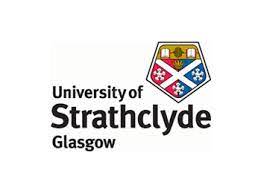University of Strathclyde: Strathclyde joins partnership in hard-to-treat cancers
The University of Strathclyde has joined a UK-wide partnership which is focused on the efficacy of drugs for cancers which are difficult to treat.
Strathclyde has become a member of the EPSRC IRC (Interdisciplinary Research Collaboration) for Hard-To-Treat Cancers. It will enable biological testing of lead materials featured in the development of high-capacity vehicles for the targeted delivery of pharmaceutical compounds, to enhance drug efficacy in the treatment of pancreatic cancer.
Pancreatic cancer, along with mesothelioma and brain cancer glioblastoma, is one of the three cancers in the sights of the IRC programme, led at the University of Cambridge. Part of the work being undertaken is the formulation of chemotherapies using macromolecular systems to enhance drug efficacy.
The planned studies are required to confirm efficacy enhancement and assess toxicology and biodistribution to inform the likelihood of successful translation to the clinic.
One of the main aims of the IRC is clinical translation, which requires optimisation in pancreatic models of the lead materials. Dr Clare Hoskins, Reader in Bionanotechnology in Strathclyde’s Department of Pure and Applied Chemistry, is a leader in cancer nanomedicine development with special interests in stimuli-responsive and intelligent materials for precision pancreatic cancer therapy. The partnership will enable a suite of biological assessments of candidate high-capacity vehicles and significantly enhance the experimental capabilities of the IRC.
Dr Hoskins said: “I am thrilled to be joining the ICR team working in the clinical translation of the high-capacity vehicles produced. This area is at the cutting edge of formulation technology and the experiments in my laboratory will help push the vehicles further down the developmental pathway towards patients.”
Dr Hoskins’ research into the use of metallic nanoparticles, both in targeted diagnostics and therapeutic treatment of pancreatic cancer, is highly synergistic to the IRC programme. The incorporation of metallic particles into these systems would confer them with additional desirable properties such as imaging ability – allowing for real time tracking and fate determination.

